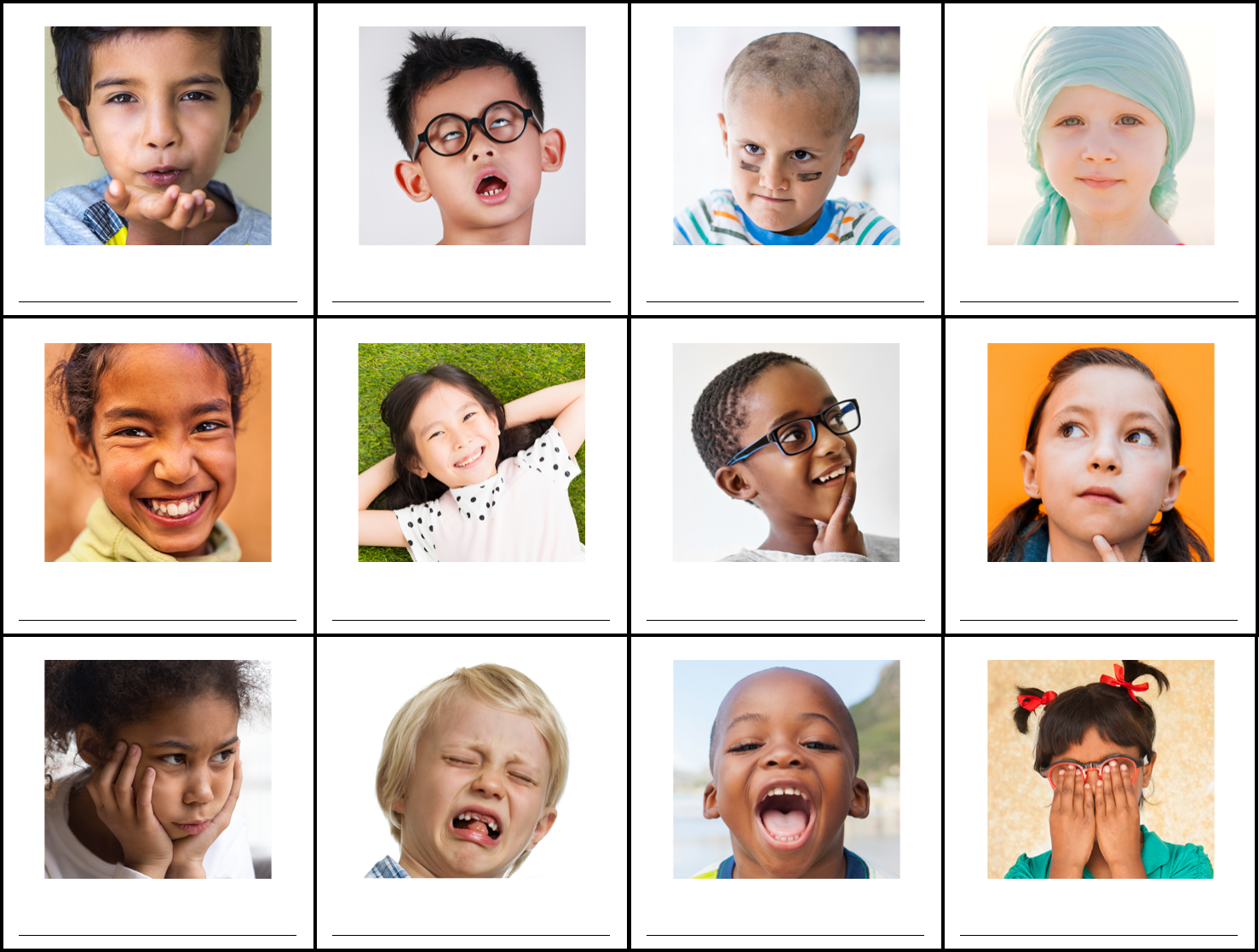
Feeling Faces:
Cards (English-Blank)
Emotional Literacy: Using Feeling Faces
The Feeling Faces assist children with understanding their feelings and the
feelings of others. It is important to teach children words to use to express
feelings in replace of the use of challenging behavior. The feeling cards that
follow can be used in a variety of ways to help children learn social emotional
skills around use of emotional literacy and vocabulary.
X Use the pictures to talk about, identify, and describe different emotions
when you or children feel this way.
X The feeling faces can be used as part of an “emotion check in.” Children
can use the feeling faces to let you know how they are feeling throughout
the day.
X Teach new feeling vocabulary words. Start with a few emotions then move
to the more complex emotions. Teach a balance of “positive, comfortable”
and “negative/uncomfortable” feelings.
X Discuss how people can tell how you are feeling by looking at the
expression on your face. Talk about how to tell the different feelings apart
by looking at the eyes, the mouth or body position of a person. Use the feeling faces to help you point out
and explain the different facial expressions.
Activities with the Feeling Faces Cards
X Select the feeling faces you want to introduce to children. Place those pictures on key rings around the
classroom to support children in the moment with identifying and responding to emotions.
X Cut the feelings and and have children take turns drawing a feeling card. The child acts our the feeling from
the card and the peers guess the emotion.
X Use the feeling faces to develop a classroom feelings book.
X Use the feeling face pictures as a way to pair children together. Duplicate the faces and pass out the pictures.
Prompt children to locate the matching feeling face. When they find their match, they have found their partner!
X Use the feelings face pictures to create games. These type of games work great in small group instruction or
part of an existing center.
• Duplicate the faces and make a “matching” or “memory” game.
• Cut out the pictures and use a template to make a bingo board. While playing the game, call out the
feelings and have children put a marker on the named feeling.
National Center for Pyramid Model Innovations | ChallengingBehavior.org
The reproduction of this document is encouraged. Permission to copy is not required. If modied or used in another format, please cite original source. This
is a product of the National Center for Pyramid Model Innovations and was made possible by Cooperative Agreement #H326B170003 which is funded by
the U.S. Department of Education, Ofce of Special Education Programs. However, those contents do not necessarily represent the policy of the Depart-
ment of Education, and you should not assume endorsement by the Federal Government.
Pub: 10/28/20
Make it your own!
Use the blank lines
under each feeling
to add your own
language translations!
Happy
hau‘oli

Affectionate
Bored
Brave
Calm
Cheerful
Comfortable
Creative
Curious
Disappointed
Disgusted
Excited
Embarrassed

Fantastic
Fearful
Frustrated
Happy
Jealous
Lonely
Loved
Mad
Nervous
Overwhelmed
Proud
Relaxed

Sad
Safe
Satised
Scared
Sensitive
Serious
Shy
Stressed
Strong
Tense
Tired
Worried
